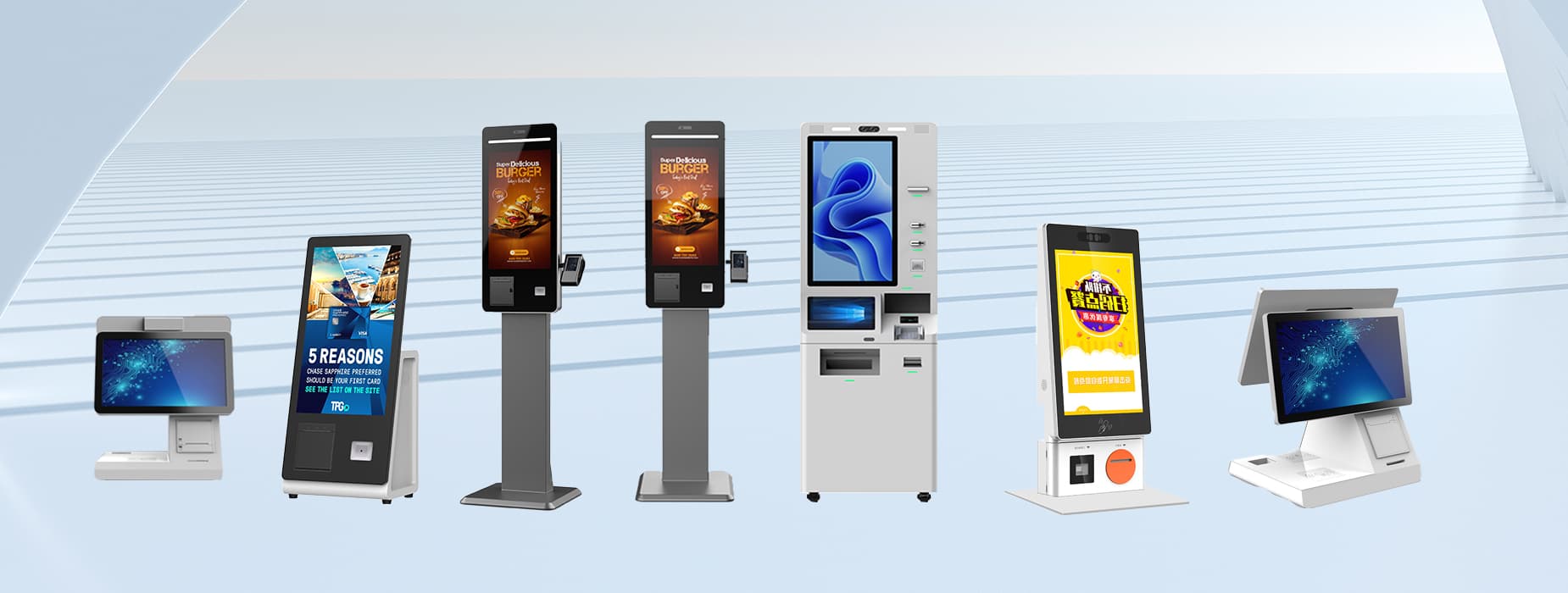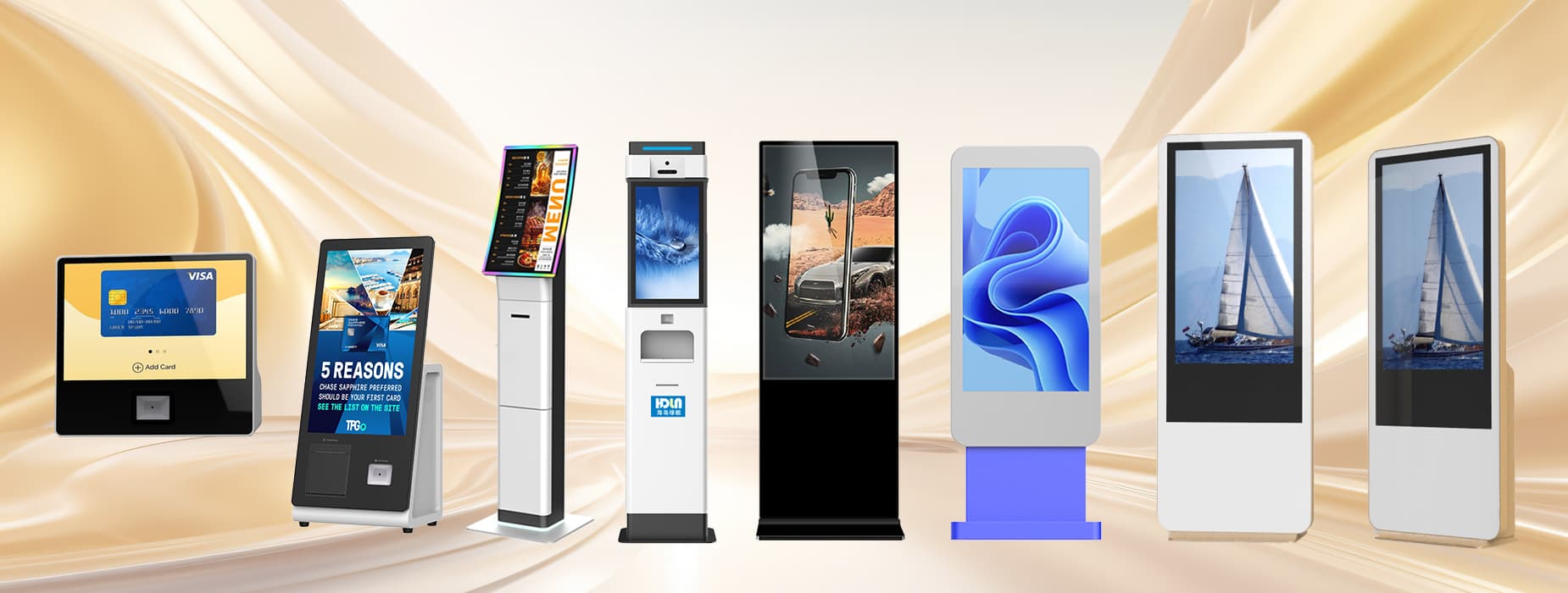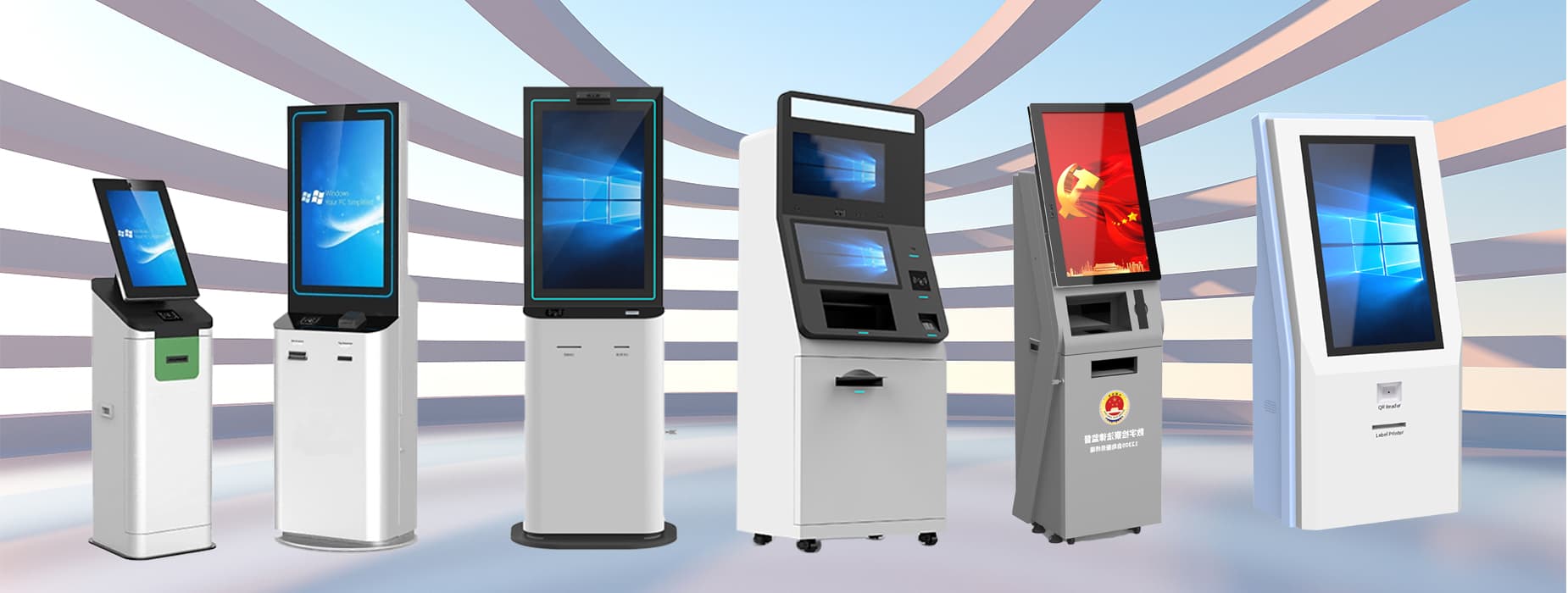Welcome to the main page on what a payment kiosk is. Here, you'll find a comprehensive definition of a payment kiosk, an explanation of what kind of device it is, including its main components, and a detailed overview of the functions of each part. Reading this article will help you gain a better understanding of payment kiosk.
A payment kiosk is an automated, self-service machine that allows customers to make various types of payments without needing assistance from staff. Commonly found in retail stores, banks, and public spaces, payment kiosks are designed to handle transactions like bill payments, ticket purchases, and even utility payments. These kiosks typically include a touchscreen interface, a secure payment processing system, and options for cash, card, or mobile payments. They offer a convenient, efficient, and quick way for users to complete transactions independently.
|
|
A payment kiosk is a versatile self-service machine designed to facilitate various types of transactions. It supports a wide range of payment methods to accommodate different customer preferences and enhance convenience. Below is a list of common payment methods supported by most payment kiosks:
Credit/Debit Cards: Accepts all major credit and debit cards, including Visa, MasterCard, American Express, and Discover.
Mobile Payments: Supports mobile wallets like Apple Pay, Google Pay, and Samsung Pay for contactless transactions.
Cash Payments: Equipped with a cash acceptor and dispenser for customers who prefer to pay with physical currency.
QR Code Payments: Allows payments through QR codes, commonly used in mobile apps for secure and quick transactions.
E-Wallets: Compatible with popular e-wallet services, such as PayPal, Venmo, and Alipay.
Prepaid/Gift Cards: Accepts prepaid cards and gift cards for transactions, offering flexibility to users.
Bank Transfers: Supports direct bank transfers for customers who prefer using their bank accounts.
Cryptocurrency: Some advanced payment kiosks also support cryptocurrency payments, catering to tech-savvy users.

| Component | Description | Specifications |
|---|---|---|
| Touchscreen Display | The main interface for users to interact with the kiosk. | Size: 15" to 32" Type: Capacitive or resistive Resolution: 1080p to 4K Brightness: 300 to 1000 nits (for outdoor kiosks) |
| Payment Terminal | Processes credit/debit card transactions. | Type: EMV-compliant Card Reader: Chip, magnetic stripe, NFC Connectivity: USB, RS232, Ethernet |
| Printer | Prints receipts or tickets for transactions. | Type: Thermal printer Paper Width: 58mm, 80mm Printing Speed: 150mm/s to 250mm/s |
| Cash Acceptor | Accepts and verifies banknotes from users. | Capacity: 500-1500 notes Validation Speed: 3 seconds per note Accepted Currencies: Configurable by region |
| Coin Acceptor | Accepts and verifies coins from users. | Capacity: 300-600 coins Coin Types: Configurable Validation Speed: 3 coins per second |
| Barcode Scanner | Scans barcodes and QR codes for various applications. | Type: 2D imager Scan Speed: 60-100 scans per second Connectivity: USB, RS232 |
| Receipt Dispenser | Distributes printed receipts to the user. | Capacity: 500-1000 receipts Paper Type: Thermal paper |
| Card Dispenser | Issues cards to users after payment is completed. | Capacity: 100-500 cards Card Type: RFID, Magnetic Stripe |
| CPU/Processor | The central processing unit that powers the kiosk. | Type: Intel i5/i7 or equivalent RAM: 8GB to 16GB Storage: 128GB SSD or higher |
| Operating System | The software platform that manages the kiosk’s functions. | Type: Windows 10 IoT, Linux, Android |
| Enclosure/Chassis | The outer casing that protects the internal components of the kiosk. | Material: Steel or aluminum Finish: Powder-coated, customizable colors Weatherproofing: IP54 to IP65 (for outdoor models) |
| Security Camera | Monitors and records kiosk activity for security purposes. | Type: HD or Full HD camera Connectivity: Ethernet, USB Features: Motion detection, night vision |
| Power Supply | Provides power to the kiosk and its components. | Input Voltage: 110V/220V AC Output Voltage: 12V/24V DC Battery Backup: Optional, up to 4 hours |
| Cooling System | Maintains optimal operating temperature within the kiosk. | Type: Fan or Peltier-based cooling Operating Temperature: -20°C to 50°C |
| Connectivity Options | Ensures the kiosk remains connected to a network for transaction processing and updates. | Type: Ethernet, Wi-Fi, 4G/5G Ports: USB, HDMI, Ethernet, RS232 |
| Software Interface | The software that enables user interaction and payment processing. | Type: Customizable UI/UX Payment Gateway Integration: Supports major gateways (e.g., Stripe, PayPal) |
| Accessibility Features | Components designed to make the kiosk accessible to all users. | Features: ADA-compliant height and reach Audio Support: Speaker and headphone jack Braille Keypad: Optional |
| Maintenance Access | Panels or doors that allow easy access to internal components for servicing. | Type: Lockable doors Key/Card Access: Secure entry to critical components |
| Lighting | Illuminates the kiosk for visibility and usability in low-light conditions. | Type: LED lighting Brightness Control: Automatic or manual Location: Under canopy, around screen |
Detailed Introduction: The touchscreen display is the primary interface through which users interact with the payment kiosk. It allows users to easily select payment options, input data, and complete transactions. Common touchscreen types include capacitive touchscreens, known for their responsiveness and durability, ideal for most kiosks; and resistive touchscreens, suitable for environments where users might wear gloves. | Specifications:
|
Detailed Introduction: The payment terminal is the device that processes credit and debit card transactions. It supports various payment methods including chip cards, magnetic stripe cards, and contactless NFC payments. The terminal is EMV-compliant, ensuring secure transactions. | Specifications:
|
Detailed Introduction: The printer is responsible for issuing receipts or tickets after a transaction. It typically uses thermal printing technology, which is fast and doesn’t require ink or toner, making it cost-effective and low-maintenance. | Specifications:
|
Detailed Introduction: The cash acceptor is a secure device that accepts and verifies banknotes. It can distinguish between different denominations and ensure that only authentic currency is accepted. It is essential for kiosks that handle cash payments. | Specifications:
|

Detailed Introduction: The coin acceptor is used for accepting and validating coins as payment. It sorts and counts coins, ensuring only legitimate currency is processed. This component is crucial for environments where cash transactions are frequent. | Specifications:
|
Detailed Introduction: The barcode scanner reads barcodes and QR codes, enabling quick data entry and verification for various applications such as payment by scanning a bill, loyalty cards, or product codes. | Specifications:
|
Detailed Introduction: The receipt dispenser is designed to distribute printed receipts to users after a transaction. It is often integrated with the printer and is essential for providing proof of transaction. | Specifications:
|
Detailed Introduction: The card dispenser issues physical cards to users, such as prepaid cards, access cards, or loyalty cards, after a transaction is completed. It is commonly used in kiosks that provide membership or access control services. | Specifications:
|
Detailed Introduction: The CPU is the central processing unit that controls all the operations of the kiosk. It processes data, runs the kiosk software, and ensures smooth and efficient performance. A powerful processor is crucial for handling multiple tasks simultaneously. | Specifications:
|
Detailed Introduction: The operating system (OS) manages the kiosk’s software and hardware, enabling the kiosk to run applications and process transactions. Common choices include Windows, Linux, or Android, depending on the specific needs and integration requirements. | Specifications:
|
Detailed Introduction: The enclosure or chassis is the outer casing that protects the internal components of the kiosk from damage, tampering, and environmental factors. It also provides an aesthetic appeal, often customizable to match the branding of the service provider. | Specifications:
|
Detailed Introduction: The security camera monitors and records activities around the kiosk, providing an additional layer of security. It can deter vandalism and provide evidence in case of a security incident. | Specifications:
|
Detailed Introduction: The power supply provides the necessary electrical power to the kiosk and its components. It converts AC power from the grid to the DC power required by the kiosk's electronics. In some cases, a battery backup is included to maintain operation during power outages. | Specifications:
|

Detailed Introduction: The cooling system maintains the internal temperature of the kiosk, preventing overheating of the components. This is especially important in outdoor or high-usage environments where the kiosk may generate significant heat. | Specifications:
|
Detailed Introduction: Connectivity options ensure the kiosk remains connected to a network for processing transactions, receiving updates, and communicating with central systems. This is crucial for real-time operations and maintaining kiosk uptime. | Specifications:
|
Detailed Introduction: The software interface is the user-facing part of the kiosk’s operating system, enabling interaction through a graphical user interface (GUI). It is often customized to meet the specific needs of the service provider and ensure a seamless user experience. | Specifications:
|
Detailed Introduction: Accessibility features are designed to make the kiosk usable by all individuals, including those with disabilities. These features help ensure compliance with regulations like the Americans with Disabilities Act (ADA) and enhance user inclusivity. | Specifications:
|
Detailed Introduction: Maintenance access includes panels or doors on the kioskthat allow technicians to service and maintain the kiosk's internal components easily. This is crucial for routine maintenance, repairs, and restocking consumables like paper or cards. | Specifications:
|
Detailed Introduction: Lighting within and around the kiosk enhances visibility, especially in low-light conditions. It can be used to illuminate the screen, highlight key areas of the kiosk, or make the kiosk more visible to users from a distance. | Specifications:
|
Detailed Introduction: The speaker and microphone enable audio interaction with the kiosk, allowing for features like voice commands, audible confirmations, or customer service calls. This is particularly useful in scenarios where visual interaction might not be sufficient or for users with disabilities. | Specifications:
|
These detailed descriptions help to understand the function, importance, and technical aspects of each component within a payment kiosk, ensuring that each part works together to provide a seamless and reliable user experience.

To use a payment kiosk, follow these steps: Select your desired service on the touchscreen, choose your payment method (card, cash, or mobile), follow on-screen prompts to complete the transaction, and collect your receipt.
Payment kiosks typically accept a variety of payment methods, including credit/debit cards (chip, magnetic stripe, NFC), mobile payments (Apple Pay, Google Pay), cash, and sometimes checks, offering flexible options.
Yes, you can put cash in a payment kiosk. These kiosks often feature cash acceptors that validate and count the cash, allowing users to pay bills, reload accounts, or make purchases directly with paper currency.
If you want to learn more faqs, you can click payment kiosk faqs
In summary, Payment kiosk is a self-service kiosk machine designed to facilitate secure and efficient financial transactions, such as bill payments, ticketing, and cash withdrawals. Equipped with components like a touchscreen, payment terminal, printer, and various acceptors (cash, coin, card), it offers users a quick, accessible, and user-friendly experience. The key benefits include reduced wait times, enhanced transaction security, and operational cost savings by automating payment processes. Investing in payment kiosks can drive customer satisfaction, increase revenue by expanding service hours, and provide valuable data insights, making it a high-value asset for businesses across various sectors.